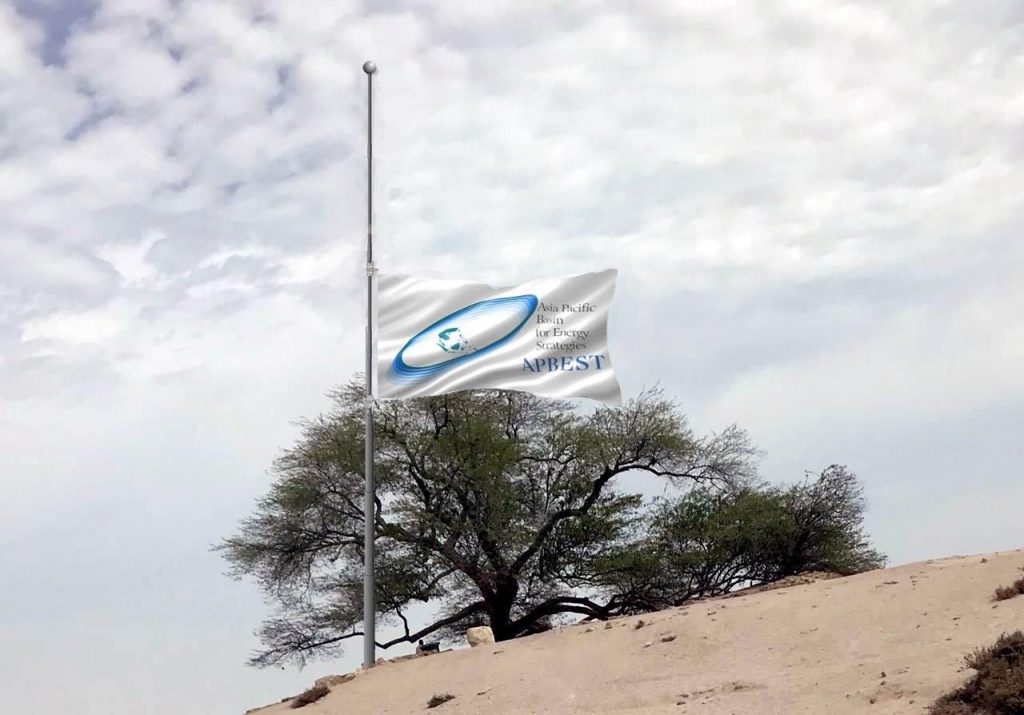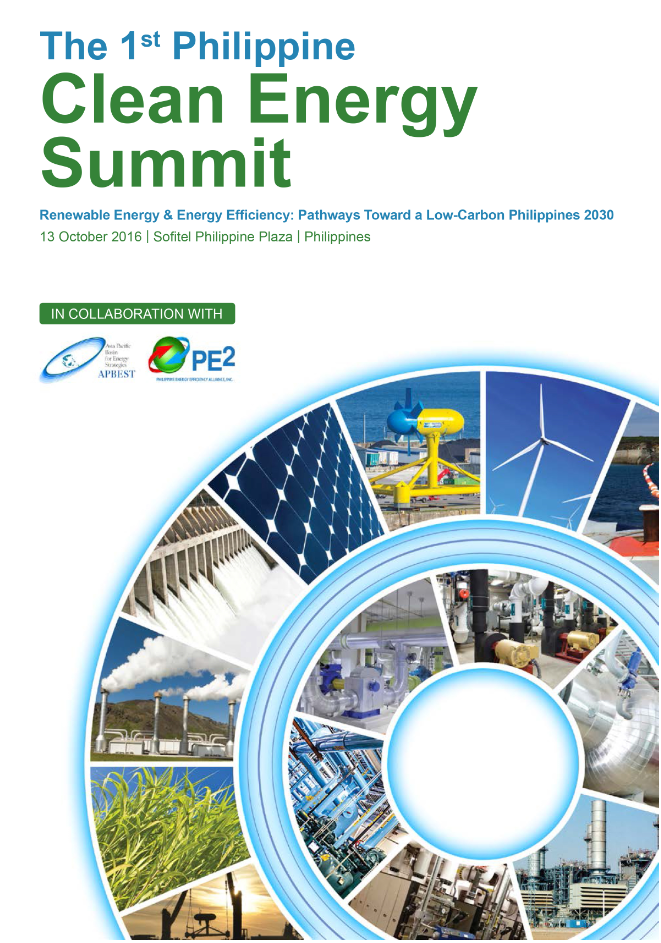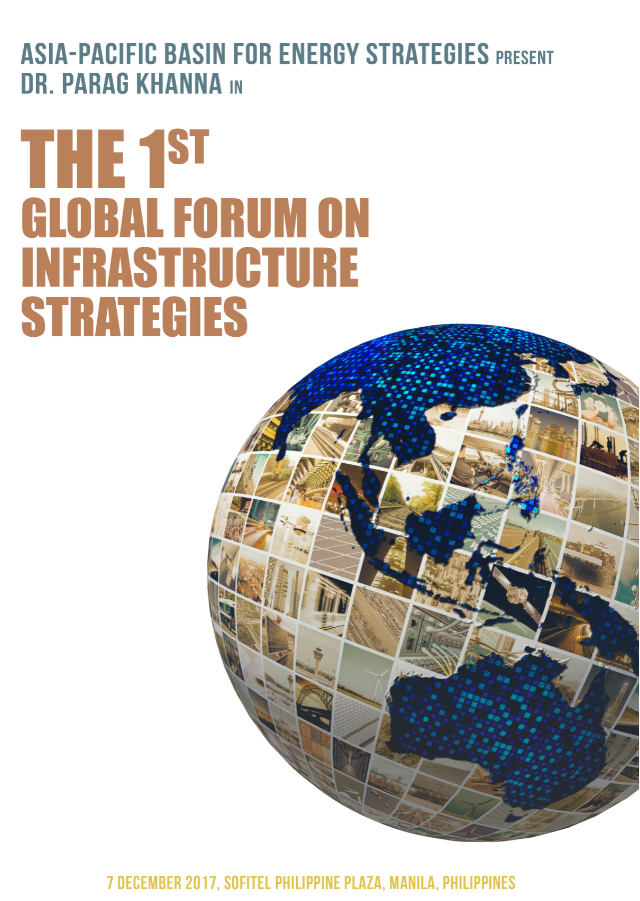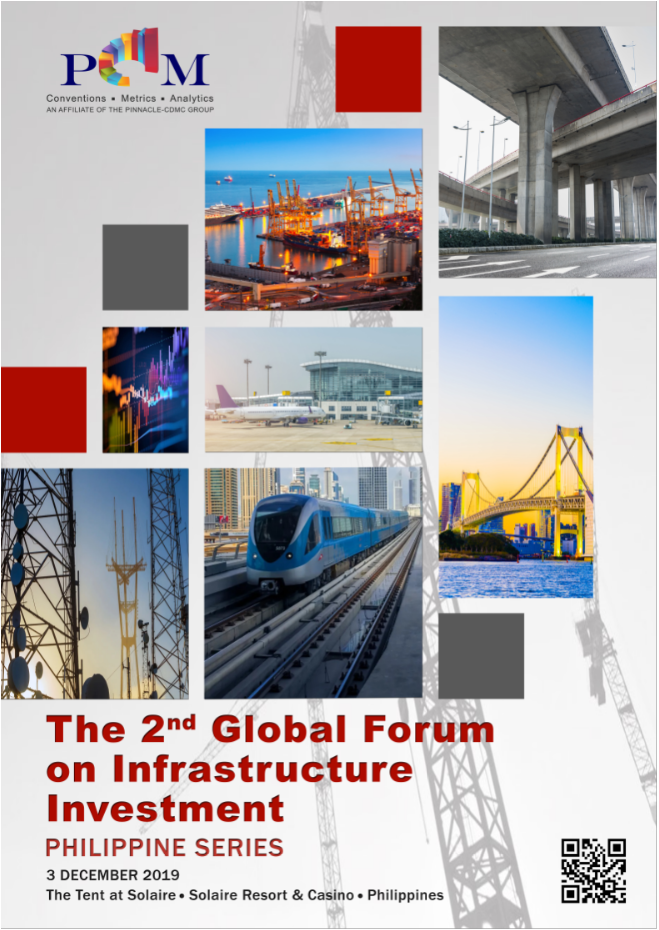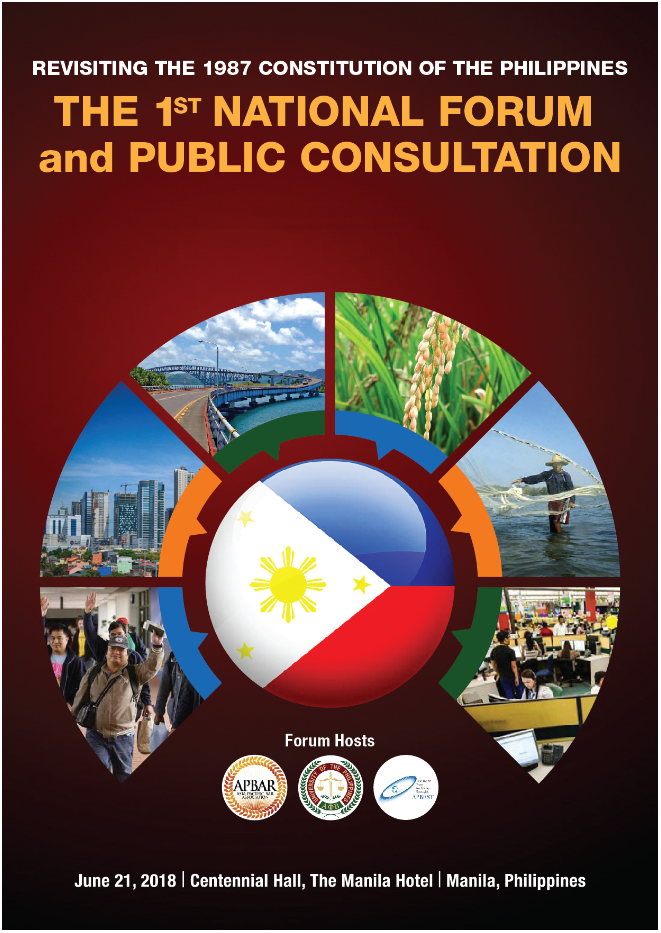by: Antonio A. Ver, “Conversations in Power and Energy in the Philippines,” Part V, February 25, 2020, Taguig City, Metro Manila.
This article was recently published in Inquirer.net. You can access the article through this link.
You can download a PDF version of this article by clicking this link.
This Paper is part of the national conversations on power and energy. It deals with the question of whether or not NGCP should remain as the System Operator (SO) of the national grid, which is, primarily, the transmission highway through which electricity passes from power generators to distribution utilities and electric cooperatives. The take-off point is that the NGCP should not remain as the SO.
By way of objective, this article seeks to determine whether or not there is a valid ground to remove NGCP as System Operator.
The portion on “The Situation from 2001-2020” is written from the viewpoint of NGCP. The portion on “The Prospects from 2021-40” is written from the viewpoint of the author, while the “Areas of Concern” represent the viewpoints of the critics, and the opinions of the author as classified under “Analysis” and “Conclusion.”
The Situation from 2001-2020
Unless otherwise specified by way of reference, the following highlights of the NGCP narrative are directly from its corporate website.
First of all, it is a fact that legislators passed the landmark R.A. 9136 (June 8, 2001), the Electric Power Industry Reform Act of 2001 (EPIRA), which sought to save the then ailing energy industry. The EPIRA introduced two major reforms: the restructuring of the electricity supply industry and the privatization of the government-owned National Power Corporation (NPC).
As mandated by law, restructuring called for separation of the different components of the power sector: generation, transmission, distribution, and supply. Electricity rates were unbundled to allow consumers to see each individual component of the electricity service they are paying for. In addition, generation was privatized through the sale of generation assets. More specifically, the transmission business was spun off to government-owned National Transmission Corporation (TransCo) in preparation for its eventual privatization via concession,” which became NGCP.
The result is known as vertical unbundling, or the separation of generation, transmission, distribution and (sometimes) retail functions. This form of unbundling allows for the separation of potentially competitive segments (generation and retail), where many actors can participate, from uncompetitive segments (transmission and distribution) that generally require a single actor to manage the grid infrastructure in a specific area.
“Vertically unbundled electricity sectors have been international best practice since the 1990s.”
https://www.powerfutures.org/updates/2019/2/6/what-is-unbundling-understanding-electricity-sector-unbundling-in-sa
Secondly, it is a fact that after an open, public, and competitive bidding process, the consortium of Monte Oro Grid Resources Corp., Calaca High Power Corporation, and the State Grid Corporation of China, as technical partner, won the 25-year concession in 2007 to operate the country’s power transmission network. Regional and global grid operators with Philippines power companies as partners participated in the competitive bid. At that time, it was the biggest government auction conducted in efforts to reform the local power sector.
By virtue of R.A. 9511 (December 1, 2008), also known as the NGCP franchise or concession, the obligation by way of concession to operate, maintain, and expand the grid was given to private investors with the government retaining ownership of the country’s transmission assets through TransCo.
It is on record that NGCP officially started operations as power transmission service provider in 2009. Under a Congressionally-granted 50-year franchise, NGCP has the mandate to operate and maintain the transmission system and related facilities, and the right of eminent domain necessary to construct, expand, maintain, and operate the transmission system.
On balance, NGCP stands on fair ground to continue operating until 2058, as provided in its franchise, absent any claim to the contrary.
The Prospects from 2021-40
QuoVadis, NGCP, #WhereAreYouGoing?
Prospectively for the NGCP and the electricity market players, the following will happen in the next two to three decades.
First of all, the demand for electricity in the Philippines will double within 20 years. A mere 3.6% annual compounded growth will make this happen. Considering that the average historical GNP growth for decades had been between 5-6%, the smart money is on doubling of electricity demand 20 years down the road.
Second, it will still take five years or more to develop and finance a baseload, greenfield power plant project, say, deploying Clean-Coal Technology (CCT), or even a Combined-cycle gas-turbine plant fed by LNG. However, Independent Power Producers (IPP) today are suffering from a setback of another five years. This is attributed to regulatory and policy issues. If the demand doubles in 20 years, a 25% reserve margin (equivalent to five out of 20 years) must be built ahead of time. At present, the operating reserve margin at the NGCP franchise stands at around 15%-20% only. Thus, while the industry looks overinvested by 15-20%, it is actually under invested by 5-10% for failing to meet the 25% reserve margin.
Third, the required capacity will likely also double within 20 years or else there will be brownouts. Thus, construction targets must exceed estimated increase in demand or brownouts lurk waiting to happen. This is true for all: generation, transmission, and distribution.
Fourth, increasingly serious efforts to construct the infrastructure, e.g., transmission structures, transmission lines, new substations, and transformer capacity, will be needed more and more to meet the doubling of demand (plus 25% reserve margin) and that can be expected to continue into the future as it did in the past. Consider, further, a Right-of-Way process engulfed in a difficult Parcellary survey despite a new law supposedly to ease the steps. Until the ROW is resolved with finality, nothing moves forward in spite of all the investments made earlier. Permits and other requirements of national and local governments that expire, more often go back to square-one.
Fifth, the delivery of safe, quality, and reliable electricity will continue like before, as building new N-1 transmission lines and expanding substation capacity grow in tandem with increasing power supply, towards NGCP’s vision of a fully-interconnected and integrated power grid, and access to state-of-the-art technology. Cutting-edge technology will continue to be the grail that leads to the paradigm of a safe, quality, and reliable electricity in the Philippines.
Sixth, the rise of real GNP will continue at its decade average of 5-6%, so long as sufficient electricity capacity is available to support that growth. The two will continue to feed on each other. And definitely, higher GNP growth opportunities will be missed by neglecting prior investments on power capacity. The relationship between the demand for electricity and GNP growth will continue to be symbiotic, direct, and proportional.
Seventh, the share of electricity in the typical Filipino family budget will still be within the average of 4% a year while the share of transmission costs in electricity bills will still be around 3-4% a year. Thus, nationwide transmission’s share in GNP, unbundled, will be around 1.2% to 1.6%.
Eighth, the Maximum Allowed Revenue approved by the ERC for NGCP will still stay within the 3-4% range of the average electricity bill. System loss in the NGCP service area market will continue to be around 2-3%, which is lower the 7% system loss estimate for the US.
Ninth, the NGCP will continue to prioritize prepaying its concession fees to save on costs (about 6.4% added to the concession fee, using March 2015Philippine Dealing System data) and to safeguard its future profitability from the concession arrangement. NGCP will continue to reinvest and plowback funds into the business in order to maintain profits. However, the threat of raising taxes to 30% after paying the 3% franchise tax on top of the concession fee plus interest at “10%PDST-F” plus 2.3% will crowd out NGCP’s profitability, and hamper its financing capacity and ability to keep with the need to expand its capacity to deliver safe, quality, and reliable electricity in the Philippines.
Tenth, its continued profitability will make NGCP more attractive to investors such that battles and intrigues must be continually won again and again along the timeline. NGCP will stay as System Operator of the national grid until its franchise ends in 2058.
The Areas of Concern
This part crystallizes the thoughts of the critics adverse to that of the embattled NGCP, with author’s notes classified under the Analysis and Conclusion.
The doubling of the demand for electricity offers profit opportunities in the market place. Any doubling of productive capacity theoretically represents a chance to rebuild the power generation, transmission, and distribution aspects of the electricity business one more time.
In a nutshell, it’s a game of “follow the money,” for both NGCP and its critics. Additionally, for the latter, “the grass on the other side of the fence looks greener.”
Perforce, the major areas of concern of this monograph are at least four-fold, to wit:
1. Objections Anchored on the Use of Huawei Proprietary Technology
Criticism
There is an orchestrated objection to using Huawei technology. The objection is a spill-over from the trade war between the US and China. In an electronic dispatch from Reuters:
“A bipartisan group of 15 U.S. senators urged the Commerce Department to suspend issuing licenses to U.S. firms that conduct business with China’s Huawei Technologies Co, saying it could threaten U.S. security.”
www.reuters.com/article/us-usa-china-huawei-tech/15-u-s-senators-urge-trump-administration-to-halt-huawei-license-approvals-idUSKBN1XV28E
“Every month that the US does nothing, Huawei stands poised to become the cheapest, fastest, most ubiquitous global provider of 5G, while US and Western companies and workers lose out on market share and jobs.”
Warner, who co-founded the wireless company Nextel before entering public service and currently serves as vice chairman of the Senate Intelligence Committee, said in a statement that it is imperative for the US Congress address the complex security and competitiveness challenges that Chinese-directed telecommunication companies pose.
“National security officials fear that equipment from these manufacturers could be used to spy on other countries and companies. In May, President Donald Trump issued an executive order effectively banning new Huawei gear from US communications networks. The Federal Communications Commission also voted last year to cut off funding to wireless carriers that use equipment from these firms, because of the national security risk associated with the gear.”
https://www.cnet.com/news/senators-propose-more-than-1-billion-in-subsidies-to-fund-5g-alternatives-to-chinas-huawei/
Analysis
The superiority and dominance of Huawei is a settled question. That the US is increasingly losing ground to China cannot be impugned.
By analogy, what is happening is a show of “crab mentality,” referring to the way crabs behave when trying to escape of an enclosure that holds them, that is, the other crabs pull down to their level anyone who is ahead in trying to get out of the containment.
Conclusion
“De gustibus non esdisputandum.” Of likes and dislikes, there is no disputing.
But, in essence, the criticism over the use of Huawei proprietary technology is a political objection that puts good business sense in the back burner. On neutral grounds, the sentiments of both parties are understandable, fraught as they are with human frailties. In brief, it’s common sense operating from opposing perspectives, with the losers wishing ill on the winners.
2. Objection Anchored on Constitutional Grounds
Article XII of the 1987 Constitution is herein cited by way of reference.
“The State shall promote the preferential use of Filipino labor, domestic materials and locally produced goods, and adopt measures that help make them competitive. The practice of all professions in the Philippines shall be limited to Filipino citizens, save in cases prescribed by law.”
Criticism
There are Chinese workers working at NGCP. This criticism is directly linked with the use of Huawei technology. Indeed, the Chinese workers come with state-of-the-art Huawei technology, until Filipino workers can competently and independently operate it.
Analysis
Article XII is a statement of policy, a guideline for thinking, with exceptions allowed. The policy covers persons practicing their professions. Any culpability is personal, not corporate. Without Huawei, another set of workers from foreign manufacturers will grace the raised dais. Again, common sense.
Conclusion
There cannot be found a judgment that the NGCP, which is a private concession, violated the 1987 Constitution. That is because the practice of professions is a personal thing. This is a given, a long time ago.
3. Objections Anchored on the NGCP Franchise
Sec. VIII of R.A. 9511 is cited by way of reference.
“Dispersal of Ownership. – The Grantee shall list, subject to the requirements of the Securities and Exchange Commission (SEC) and the PSE, and make a public offering of the shares representing at least twenty per centum (20%) of its outstanding capital stock or a higher percentage that may hereafter be provided by law within ten (10) years from the commencement of its operations: Provided, That the listing in the PSE of any company which directly or indirectly owns or controls at least thirty per centum (30%) of the outstanding shares of stock of the Grantee shall be considered full compliance of this listing requirement. In case compliance with this requirement is not reached, the ERC may, upon application of the Grantee, and after notice and hearing, allow such reasonable extension of the period within which the Grantee should list its shares of stock, if the market condition is not suitable for such listing.”
Criticism
The NGCP should be listed in the stock exchange. It should offer 20% of its stocks to the public.
Analysis
In accordance with Sec. VIII of RA 9511, “the listing in the PSE of any company which directly or indirectly owns or controls at least thirty per centum (30%) of the outstanding shares of stock of the NGCP shall be considered full compliance of the listing requirement. In case compliance with the said requirement is not reached, the ERC may, upon application of the NGCP, and after notice and hearing, allow such reasonable extension of the period within which the Grantee should list its shares of stock, if the market condition is not suitable for such listing.”
Conclusion
Among finance professionals, it is a settled issue that debt is cheaper than equity. In other words, debt financing is cheaper because the payment amounts to be given to the banks are fixed and scheduled while equity financing is more expensive because payments are not fixed or scheduled. Thus, it is good business sense to borrow first than to sell stocks. More so, when bank interest rates are going down.
Nevertheless, the time will come when NGCP must sell stocks to the public. It shall happen! As of press time, the NGCP eagerly awaits for the approval by the ERC of NGCP’s application for backdoor listing as another way of raising equity funds and for the stockholders to play with their shares. Who could be against that?
The anticipated doubling of the demand for electricity and the need to double capacity (with the ERC’s target 25% reserve margin) in generation, transmission, and distribution, behooves increasing NGCP’s equity without need of legislation, hell or high water. It’s just common sense.
4. Objection Anchored on Foreign Equity Ownership
Criticism
The equity structure of NGCP violates the law on foreign equity ownership. As alleged, NGCP stocks should be held 100% by Filipinos.
Analysis
At present, 40% foreign ownership is already allowed for concessions like the NGCP.
As this article is being written, the House of Representatives already approved on 2nd reading House Bill 78 that would allow foreigners to own public utilities in the Philippines. “HB No. 78 would provide a more explicit definition of public utility, which is defined under the measure as a person or entity that “operates, manages, and controls for public use” any of the following: distribution of electricity, transmission of electricity, water pipeline distribution system, sewerage pipeline.” (www.rappler.com)
Conclusion
In pursuit of their bounden duties, the legislators and the President will decide on the foreign equity ownership. By all indications, neither 100% foreign ownership nor 100% Filipino ownership will become a non-issue very soon. In the words of John Morris Roberts, Warden of Merton College, Oxford University, “the march of history is towards a world of “shared experiences.”
Framework
The framework of analysis is the Work-Centered Activity (WCA) framework. According to this framework, there is a need for parallel technology runs for five years during the transition from one technology to another.
The matter is a settled question among people who manage transitions from manual to electronic (from analog to digital). They know that they have to keep the old technology running even while the new technology is already running.
For the sake of discussion, assume that a new facility is chosen to take-over Huawei’s role in the grid.
While it does not make good business sense not to patronize a brand that is both the technological leader and the lowest-cost leader, essentially, that is what is meant by junking Huawei technology. Who shoulders the added costs that come with trading-off Huawei? Why pay more for less?
Recapitulation
In writing this Paper, there is always that overhanging temptation to rebut argument with arguments, to bring forward new numbers and interface them with the old numbers of the critics. However, that leads to “he says, she says” in the end. Besides, this is not an apologia for NGCP. They can take care of themselves.
Thus, the article starts with the assumption that the critics bring to the table their best lights. Thereafter, it comes down to comparing the assumed truth with the case facts and the immutable provisions of the law.
To recapitulate, the objections to the continuation of safe, quality, and reliable electricity as essayed by NGCP since 2008 can be considered as inane in view of the following considerations:
- The objection to the use of Huawei proprietary technology is a spill-over of the US-China trade war and the blacklisting of Huawei, hatched under political-economic circumstances;
- The objection anchored on Article XII of the 1987 Constitution is quite a stretch that is interlinked with the objection over the use of Huawei proprietary technology;
- The objection anchored on Section VIII of RA 9511 (Dispersal of Ownership) is awaiting ERC’s favourable action on NGCP’s application for backdoor listing; and,
- The objection anchored on foreign equity ownership is either moot and academic or soon to be so.
Conclusion
#BarbariansAtTheGate is a 1993 television series based upon the book written by Bryan Burrough and John Helyar. Accordingly, the title of the book and movie comes from a statement by Forstmann in which he calls that Kravis’ money “phoney junk bond crap” and how he and his brother are “real people with real money,” and that to stop raiders like Kravis: “We need to push the barbarians back from the city gates.”
The website Blurtit.com attributed to Christopher Adam this comment:
“The expression “barbarians at the gate” is often used in contemporary English within a sarcastic, or ironic context, when speaking about a perceived threat from a rival group of people, often deemed to be less capable, or somehow ‘primitive.’ For example, within the university context, many historians harbour a secret (or not so secret) disdain for the field of political science, as its methodology can be very different than that of history and because some historians feel that the often larger political science departments pose a threat to them. Within such a context, one may say, somewhat sarcastically, that the ‘barbarians are at the gate.'”
In closing, perhaps there could be some more objections yet to come from the critics of the NGCP. But, fair is fair, the objections thus far examined are a bit ridiculous to say the least, so until better reasons can be found, it is the just the

